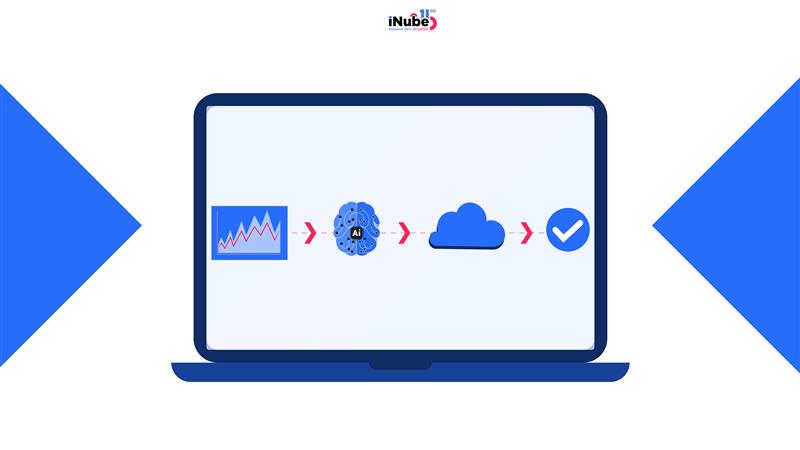Speed and accuracy are the two players in modern-day risk selection. The urgency for algorithmic underwriting is essentially driven by the need for insurers to achieve greater efficiency, speed, accuracy, and scalability in a highly competitive and increasingly digital market. This is the transformation that is crucial for meeting the evolving customer expectations and reducing the higher operational costs. This is where the million-dollar opportunity lurks- leveraging cloud-based risk assessment is no longer a luxury. In fact, 89% of financial services executives believe a cloud-enabled platform is crucial for agility, productivity, and innovation. Instead, it’s a requirement for profitable risk selection for the insurance agencies.
This guide will briefly outline the requirements for a modern cloud-based risk assessment system that insurers can leverage to stay competitive.
The Cloud Foundation: Why Modern Underwriting Needs Digital Infrastructure
The cloud component is quite a necessity for advanced risk assessment in insurance, more so because it offers scalability, computational power, and advanced data management capabilities, which are required for processing and analyzing the vast amounts of data that are used in risk modeling.
Insurers operating traditional systems are usually quite slow and inflexible in handling these demands. This is exactly where modern-day cloud-based risk assessments are necessary for advanced risk assessment.
The traditional underwriting systems struggle both in terms of volume and the variety of modern data sources due to heavy reliance on manual processes, legacy technology, and an inability to process unstructured data at scale. On the other hand, cloud-based risk assessment systems are changing the narrative that the traditional underwriting systems have set in stone for ages.
Insurers who leverage cloud-based risk assessment stay ahead with the necessary elastic computing power for machine learning risk modeling and instant data processing by offering on-demand, dynamically adjustable resources.
This significantly eliminates the need for an expensive on-premises infrastructure, thus enabling the insurers to run some of the complex models, handle the massive number of datasets, and achieve significantly faster quote turnaround times.
With the cloud platforms, the insurers will be gaining an upper hand in seamless scalability because of the flexible nature of these cloud platforms. Here’s a more vivid look at them:
Automatic Scaling
Cloud services essentially use automated scaling mechanisms that monitor workloads and dynamically add or remove resources, such as virtual machines or containers, in real-time to match the demand.
This essentially prevents performance bottlenecks, especially during peak analysis periods such as during catastrophic events or renewal seasons, all while avoiding waste and cost of over-provisioning during quieter times.
On-demand Resources
The insurers will be able to instantly provision the powerful resources, which essentially include high-performance GPUs, for computationally intensive tasks without facing the longer procurement times and the capital expenses of the traditional IT infrastructure.
Parallel Processing
The Cloud infrastructure will seamlessly facilitate the parallel processing of the vast amounts of datasets, which is extremely crucial for risk analysis. Additionally, this empowers the insurers to gain a deeper visibility for the simultaneous evaluation of multiple risk factors and scenarios, while also dramatically shortening the risk assessment phase.
Improved Decision Making
Faster data processing seamlessly enables risk managers to make an informed, data-driven decision, expedited along with enhancing overall operational efficiency and customer satisfaction.
Accelerated Underwriting
By seamlessly leveraging the cloud-based automated underwriting solutions that are powered by AI and ML, the insurers will be able to seamlessly assess the risks and generate quotes in just minutes- a process which would otherwise have taken days or weeks with the legacy systems.
The Competitive Advantage
The competitive advantages for the insurance agencies with these cloud-based risk assessment platforms lie at their fingertips. Additionally, letting them stay ahead through enhanced data-driven decision making, improved operational efficiency, and greater scalability, along with reduced costs. The reality is slowly shifting towards cloud-based risk assessment, and it’s time that insurers all over the globe normalized underwriting through the lens of cloud platforms.

Archismita Mukherjee
Insurance Content Analyst

